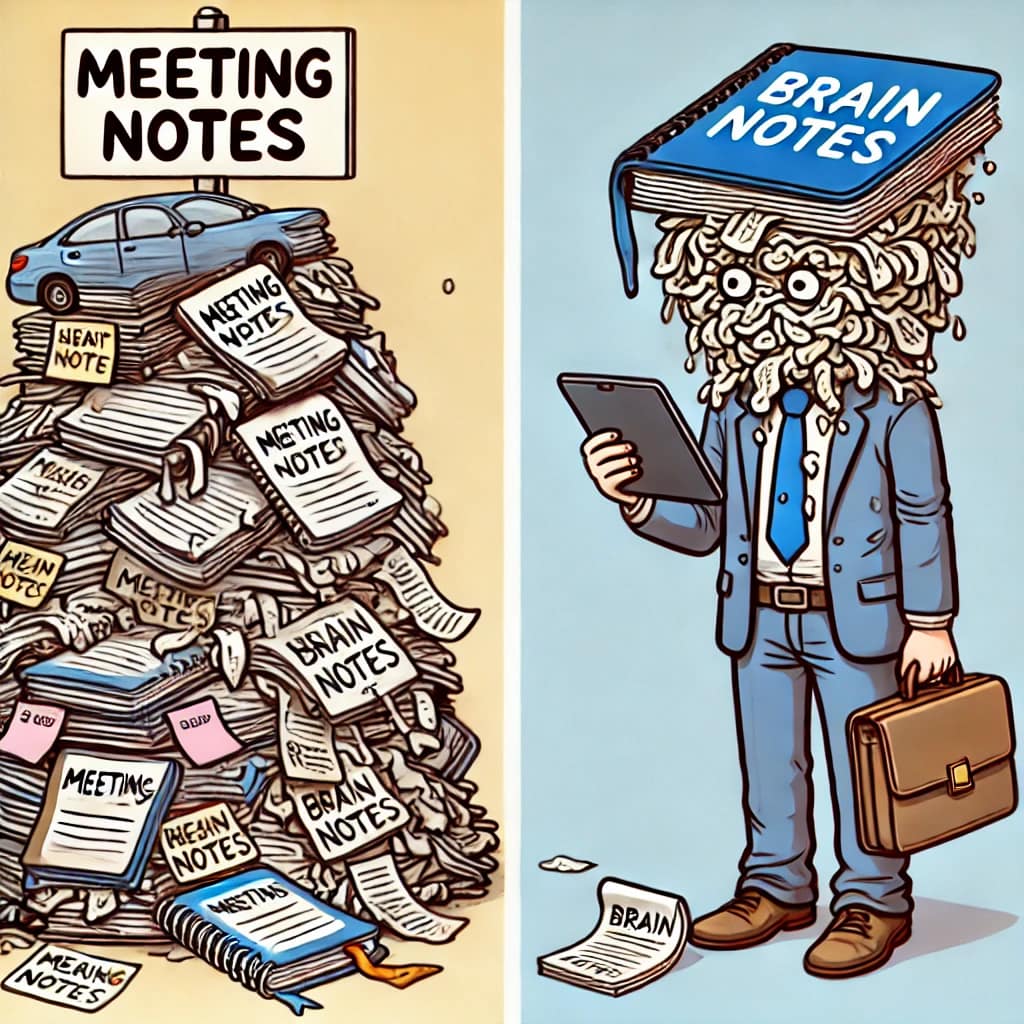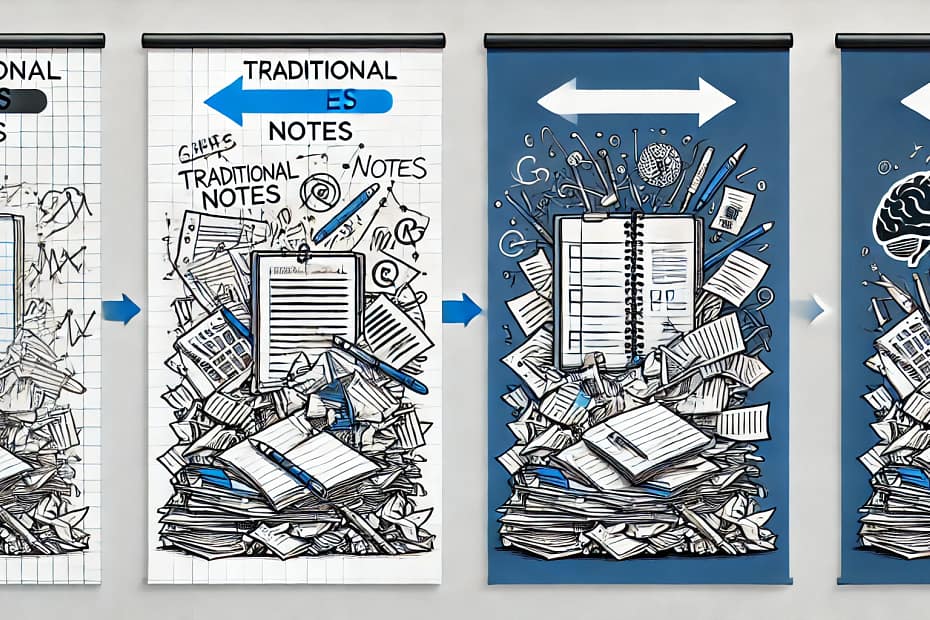By Destyn Dagle | March 23, 2025
Taking Notes: Are You Storing or Thinking?
❓ Do your notes actually help you take action—or do they just sit there?

Most people take notes to remember things, but that’s where traditional note-taking falls short. Memory alone doesn’t create action. What if your notes could do more—helping you organize, process, and apply information in real-time?
That’s where the BRAIN Method changes the game.
I am an example. I used to fill notebooks with meeting notes, only to forget key insights when I needed them most. Then she discovered BRAIN Notes—and suddenly, every meeting led to clear, actionable takeaways.
Traditional note-taking captures information. The BRAIN Method turns it into action. 🚀
📝 Traditional Note-Taking: The Limitations
Most people use linear note-taking—jotting down ideas in paragraphs, lists, or outlines. It’s how we were taught in school. But this method has problems:
❌ Too Passive – Writing things down doesn’t guarantee you’ll understand or use them.
❌ Hard to Find Key Takeaways – Long pages of notes make it difficult to identify the most important points.
❌ No Built-in Action – Notes become reference material, not a tool for execution.
❌ Easily Forgotten – Studies show we forget 70% of new information within 24 hours unless we interact with it.
Sound familiar? Then it’s time to upgrade. 🔄
🧠 The BRAIN Method: Notes That Work for You
Instead of passively writing down information, BRAIN-based notes are structured for clarity, retention, and action. Every note follows a powerful five-step format:
🔹 Background (B): What’s the core context or purpose?
🔹 Request (R): What’s the key insight, challenge, or task?
🔹 Additional Info (A): Supporting details, examples, or research.
🔹 Inquiry (I): Questions to explore deeper understanding.
🔹 Next Steps (N): Actionable steps to apply the information.
This method forces engagement with your notes, transforming them into a tool that helps you think, decide, and act—not just remember.
🚀 Why BRAIN Notes Are More Effective
✅ 1. Forces Immediate Clarity
BRAIN Notes eliminate the clutter by structuring information as you capture it. Instead of scanning long paragraphs, you can quickly see key takeaways.
✅ 2. Makes Every Note Actionable
Every BRAIN Note ends with a Next Step, ensuring you don’t just remember an idea—you apply it. Traditional notes? They just sit there. 🤷
✅ 3. Engages Critical Thinking
With Inquiry (I) built into every note, you’re always asking questions, challenging ideas, and thinking deeper.
✅ 4. Reduces Forgetting & Increases Retention
By structuring notes for active engagement, you reinforce learning and create a system where key insights stay top-of-mind.
📌 Example: Traditional vs. BRAIN Notes in Action
Imagine you’re in a meeting about customer feedback. Here’s how you might take notes:
❌ Traditional Notes (Passive)
- Customers are frustrated with response times.
- Some want 24/7 chat support.
- Suggest hiring more agents.
✅ BRAIN Notes (Action-Oriented)
🔹 Background (B): Customer feedback shows frustration with response times.
🔹 Request (R): Evaluate whether 24/7 chat support is feasible.
🔹 Additional Info (A): 65% of users expect a reply in under 5 minutes.
🔹 Inquiry (I): How many support agents would we need to implement this? What’s the cost vs. benefit?
🔹 Next Steps (N): Research cost of 24/7 support & present options by next week.
See the difference? One just records information. The other drives action. 🔥
💡 How to Switch to BRAIN Notes Today
📌 Step 1: Next time you take notes, use the BRAIN format—start structuring insights with Background, Request, Additional Info, Inquiry, and Next Steps.
📌 Step 2: Highlight action items so they stand out immediately.
📌 Step 3: Regularly review & update your notes to reinforce learning & execution.
Once you switch, you’ll never go back. The first time you use BRAIN Notes, you’ll wonder how you ever worked without them.
🎯 Ready to Make Your Notes Work for You?
Traditional notes are for storage. BRAIN Notes are for execution. 🏆
Try it for one week and see how much more you remember, apply, and achieve. 🚀
💬 Have you used structured note-taking before? What’s your experience? Drop a comment below! ⬇️
